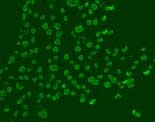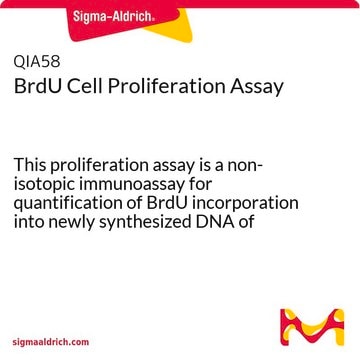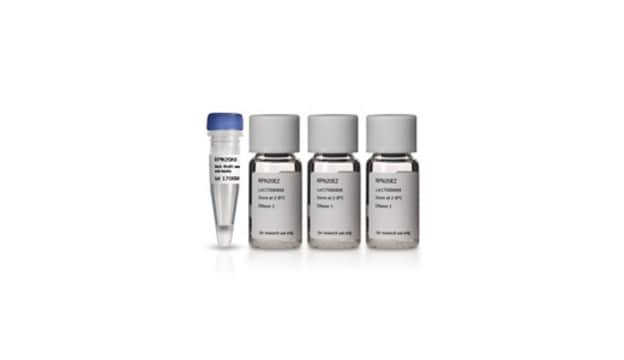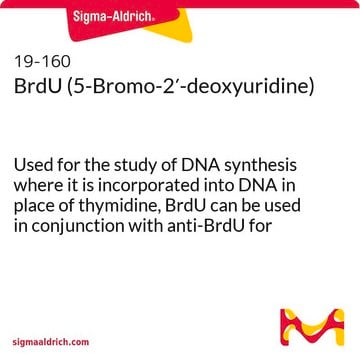NA61
Anti-BrdU (Ab-3) Mouse mAb (Mobu-1)
liquid, clone Mobu-1, Calbiochem®
Sinonimo/i:
Anti-Bromodeoxyuridine
Scegli un formato
CHF 476.00
Spedizione prevista il26 maggio 2025
Scegli un formato
About This Item
CHF 476.00
Spedizione prevista il26 maggio 2025
Prodotti consigliati
Origine biologica
mouse
Livello qualitativo
Forma dell’anticorpo
purified antibody
Tipo di anticorpo
primary antibodies
Clone
Mobu-1, monoclonal
Stato
liquid
contiene
≤0.1% sodium azide as preservative
Reattività contro le specie (prevista in base all’omologia)
all
Produttore/marchio commerciale
Calbiochem®
Condizioni di stoccaggio
do not freeze
Isotipo
IgG1
Condizioni di spedizione
wet ice
Temperatura di conservazione
2-8°C
modifica post-traduzionali bersaglio
unmodified
Descrizione generale
Immunogeno
Applicazioni

Frozen Sections (2 g/ml)
Immunocytochemistry (1 g/ml)
Paraffin Sections (2.5 g/ml, trysin pre-treatment required)
Immunoblotting (not recommended)
Confezionamento
Attenzione
Stato fisico
Risultati analitici
Unlabeled cells
BrdU labeled DNA
Altre note
Gratzner, H.G. and Leif, R.C. 1981. Cytometry1, 385.
Gratzner, H.G. et al. 1975. Exp. Cell Res.95, 88.
Note legali
Non trovi il prodotto giusto?
Prova il nostro Motore di ricerca dei prodotti.
Codice della classe di stoccaggio
11 - Combustible Solids
Classe di pericolosità dell'acqua (WGK)
WGK 1
Punto d’infiammabilità (°F)
Not applicable
Punto d’infiammabilità (°C)
Not applicable
Certificati d'analisi (COA)
Cerca il Certificati d'analisi (COA) digitando il numero di lotto/batch corrispondente. I numeri di lotto o di batch sono stampati sull'etichetta dei prodotti dopo la parola ‘Lotto’ o ‘Batch’.
Possiedi già questo prodotto?
I documenti relativi ai prodotti acquistati recentemente sono disponibili nell’Archivio dei documenti.
I clienti hanno visto anche
Active Filters
Il team dei nostri ricercatori vanta grande esperienza in tutte le aree della ricerca quali Life Science, scienza dei materiali, sintesi chimica, cromatografia, discipline analitiche, ecc..
Contatta l'Assistenza Tecnica.










